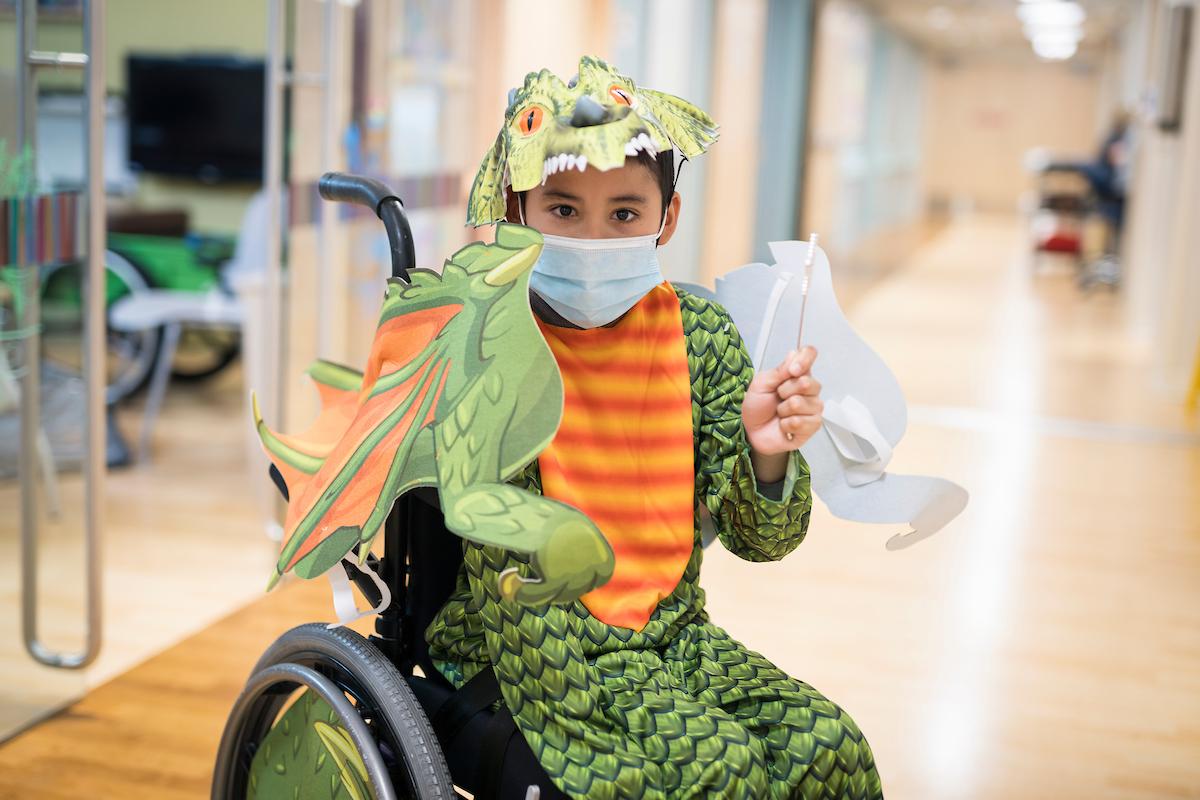“Chef Caleb” Cooks His Way Through Diagnosis of Osteogenesis Imperfecta

Stop by Breath of Life Adult Day Service in Brainerd, Minnesota, and you might encounter something pretty unusual—but pretty special. Eleven-year-old Caleb Pence is decked out in an apron and chef’s hat. He’s cooking up a storm, all while the facility’s elderly clients look on. It’s not the taping of an episode for the Food Network (although maybe it should be)—it’s Caleb’s Cooking Show, something Caleb does each month at Breath of Life.
“Our participants light up with joy when they see Caleb’s on the schedule. He’s compassionate, and he can relate to them easily and comfortably. He always has something new on the menu!” says Maxine Fromm, program director at Breath of Life.
Granted, most 11-year-olds aren’t exactly volunteer-minded. But Caleb, well, Caleb’s not your average 11-year-old. “Of all of our children, Caleb’s the hardest to define,” Megan Pence, his mom, remarks. “He’s an old soul—he prefers spending time with anyone over age 50.”

Left: Caleb prepares Beefy Biscuit Cups at Breath of Life; Right: Caleb and his PCA, Ashley, make rainbow noodles.
Not “Just Unlucky”
The Pence family lives in Baxter, Minnesota, mere minutes from Gillette Children’s Specialty Healthcare’s Baxter Clinic. It was there, six years earlier, that Megan and Chris Pence learned the real reason behind Caleb’s frequent bone fractures.
“Caleb used to break bones constantly. Doctors up here would say he’s just unlucky; they kept blowing me off. Then we visited Gillette’s Baxter Clinic when Caleb was 5. One of the nurse practitioners was taking his background and I commented that he breaks bones a lot.”
The nurse practitioner left the room and returned with a group of providers. “They all knew just by looking at him,” Megan shares. “They told us we needed to pursue a diagnosis of brittle bone disease.

Left: Caleb reads to his little brother, David; Right: Caleb’s sister Isabel is his “assistant” at cooking shows when he has limited mobility due to a broken bone.
Blue Sclera
It turned out that Caleb displayed a telltale sign of brittle bone disease, also called osteogenesis imperfecta: the sclera, or whites of his eyes, was tinted the slightest shade of blue. Further testing confirmed the diagnosis.
From that point on Caleb became a Gillette patient. He receives rehabilitation medicine and assistive technology services at Gillette’s Baxter Clinic. At age 11, he’s already broken 30 bones. Right now, for example, he’s temporarily in a wheelchair due to a broken foot.
Did you know? Gillette is an officially designated clinic by the Osteogenesis Imperfecta Foundation.

Caleb with Tommy Johnson Jr. he drives the Make A Wish race car.
Life Made Easier
In addition to his volunteer gig as Breath of Life’s guest chef, Caleb also thinks up—and pulls off—creative projects for Gillette. For his seventh birthday, he made 300 of what he named Caleb’s Imagination Kits. The kits came ready-made with craft supplies to keep kids occupied during their hospital stay. He’s also involved with the Make A Wish Foundation, and in 2015 went to Florida to fulfill his wish of swimming with dolphins.
One thing Caleb’s summer WON’T require is long road trips to Gillette’s St. Paul campus. That means more time for camping adventures as a family and for Caleb to attend theater camp, which he loves.
Megan calls the Baxter Clinic, located less than 10 minutes from home, a life-changer for their family. “We used to spend lots of time in St. Paul. Now we’ve been able to change some things to Baxter. It’s been huge for us!”

In 2018, Gillette adjusted our greater Minnesota strategy, with the goal of having a regular, weekly presence in eight communities throughout the state. Other enhancements include virtual care integration, care coordination support, and consistency of providers.







